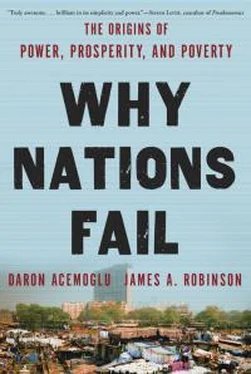These problems are illustrated by intervention engineered by the nongovernmental organization (NGO) Seva Mandir to improve health care delivery in the state of Rajasthan in India. The story of health care delivery in India is one of deep-rooted inefficiency and failure. Government-provided health care is, at least in theory, widely available and cheap, and the personnel are generally qualified. But even the poorest Indians do not use government health care facilities, opting instead for the much more expensive, unregulated, and sometimes even deficient private providers. This is not because of some type of irrationality: people are unable to get any care from government facilities, which are plagued by absenteeism. If an Indian visited his government-run facility, not only would there be no nurses there, but he would probably not even be able to get in the building, because health care facilities are closed most of the time.
In 2006 Seva Mandir, together with a group of economists, designed an incentive scheme to encourage nurses to turn up for work in the Udaipur district of Rajasthan. The idea was simple: Seva Mandir introduced time clocks that would stamp the date and time when nurses were in the facility. Nurses were supposed to stamp their time cards three times a day, to ensure that they arrived on time, stayed around, and left on time. If such a scheme worked, and increased the quality and quantity of health care provision, it would be a strong illustration of the theory that there were easy solutions to key problems in development.
In the event, the intervention revealed something very different. Shortly after the program was implemented, there was a sharp increase in nurse attendance. But this was very short lived. In a little more than a year, the local health administration of the district deliberately undermined the incentive scheme introduced by Seva Mandir. Absenteeism was back to its usual level, yet there was a sharp increase in “exempt days,” which meant that nurses were not actually around—but this was officially sanctioned by the local health administration. There was also a sharp increase in “machine problems,” as the time clocks were broken. But Seva Mandir was unable to replace them because local health ministers would not cooperate.
Forcing nurses to stamp a time clock three times a day doesn’t seem like such an innovative idea. Indeed, it is a practice used throughout the industry, even Indian industry, and it must have occurred to health administrators as a potential solution to their problems. It seems unlikely, then, that ignorance of such a simple incentive scheme was what stopped its being used in the first place. What occurred during the program simply confirmed this. Health administrators sabotaged the program because they were in cahoots with the nurses and complicit in the endemic absenteeism problems. They did not want an incentive scheme forcing nurses to turn up or reducing their pay if they did not.
What this episode illustrates is a micro version of the difficulty of implementing meaningful changes when institutions are the cause of the problems in the first place. In this case, it was not corrupt politicians or powerful businesses undermining institutional reform, but rather, the local health administration and nurses who were able to sabotage Seva Mandir’s and the development economists’ incentive scheme. This suggests that many of the micro-market failures that are apparently easy to fix may be illusory: the institutional structure that creates market failures will also prevent implementation of interventions to improve incentives at the micro level. Attempting to engineer prosperity without confronting the root cause of the problems—extractive institutions and the politics that keeps them in place—is unlikely to bear fruit.
THE FAILURE OF FOREIGN AID
Following the September 11, 2001, attacks by Al Qaeda, U.S.-led forces swiftly toppled the repressive Taliban regime in Afghanistan, which was harboring and refusing to hand over key members of Al Qaeda. The Bonn Agreement of December 2001 between leaders of the former Afghan mujahideen who had cooperated with the U.S. forces and key members of the Afghan diaspora, including Hamid Karzai, created a plan for the establishment of a democratic regime. A first step was the nationwide grand assembly, the Loya Jirga, which elected Karzai to lead the interim government. Things were looking up for Afghanistan. A majority of the Afghan people were longing to leave the Taliban behind. The international community thought that all that Afghanistan needed now was a large infusion of foreign aid. Representatives from the United Nations and several leading NGOs soon descended on the capital, Kabul.
What ensued should not have been a surprise, especially given the failure of foreign aid to poor countries and failed states over the past five decades. Surprise or not, the usual ritual was repeated. Scores of aid workers and their entourages arrived in town with their own private jets, NGOs of all sorts poured in to pursue their own agendas, and high-level talks began between governments and delegations from the international community. Billions of dollars were now coming to Afghanistan. But little of it was used for building infrastructure, schools, or other public services essential for the development of inclusive institutions or even for restoring law and order. While much of the infrastructure remained in tatters, the first tranche of the money was used to commission an airline to shuttle around UN and other international officials. The next thing they needed were drivers and interpreters. So they hired the few English-speaking bureaucrats and the remaining teachers in Afghan schools to chauffeur and chaperone them around, paying them multiples of current Afghan salaries. As the few skilled bureaucrats were shunted into jobs servicing the foreign aid community, the aid flows, rather than building infrastructure in Afghanistan, started by undermining the Afghan state they were supposed to build upon and strengthen.
Villagers in a remote district in the central valley of Afghanistan heard a radio announcement about a new multimillion-dollar program to restore shelter to their area. After a long while, a few wooden beams, carried by the trucking cartel of Ismail Khan, famous former warlord and member of the Afghan government, were delivered. But they were too big to be used for anything in the district, and the villagers put them to the only possible use: firewood. So what had happened to the millions of dollars promised to the villagers? Of the promised money, 20 percent of it was taken as UN head office costs in Geneva. The remainder was subcontracted to an NGO, which took another 20 percent for its own head office costs in Brussels, and so on, for another three layers, with each party taking approximately another 20 percent of what was remaining. The little money that reached Afghanistan was used to buy wood from western Iran, and much of it was paid to Ismail Khan’s trucking cartel to cover the inflated transport prices. It was a bit of a miracle that those oversize wooden beams even arrived in the village.
What happened in the central valley of Afghanistan is not an isolated incident. Many studies estimate that only about 10 or at most 20 percent of aid ever reaches its target. There are dozens of ongoing fraud investigations into charges of UN and local officials siphoning off aid money. But most of the waste resulting from foreign aid is not fraud, just incompetence or even worse: simply business as usual for aid organizations.
The Afghan experience with aid was in fact probably a qualified success compared to others. Throughout the last five decades, hundreds of billions of dollars have been paid to governments around the world as “development” aid. Much of it has been wasted in overhead and corruption, just as in Afghanistan. Worse, a lot of it went to dictators such as Mobutu, who depended on foreign aid from his Western patrons both to buy support from his clients to shore up his regime and to enrich himself. The picture in much of the rest of sub-Saharan Africa was similar. Humanitarian aid given for temporary relief in times of crises, for example, most recently in Haiti and Pakistan, has certainly been more useful, even though its delivery, too, has been marred in similar problems.
Читать дальше












